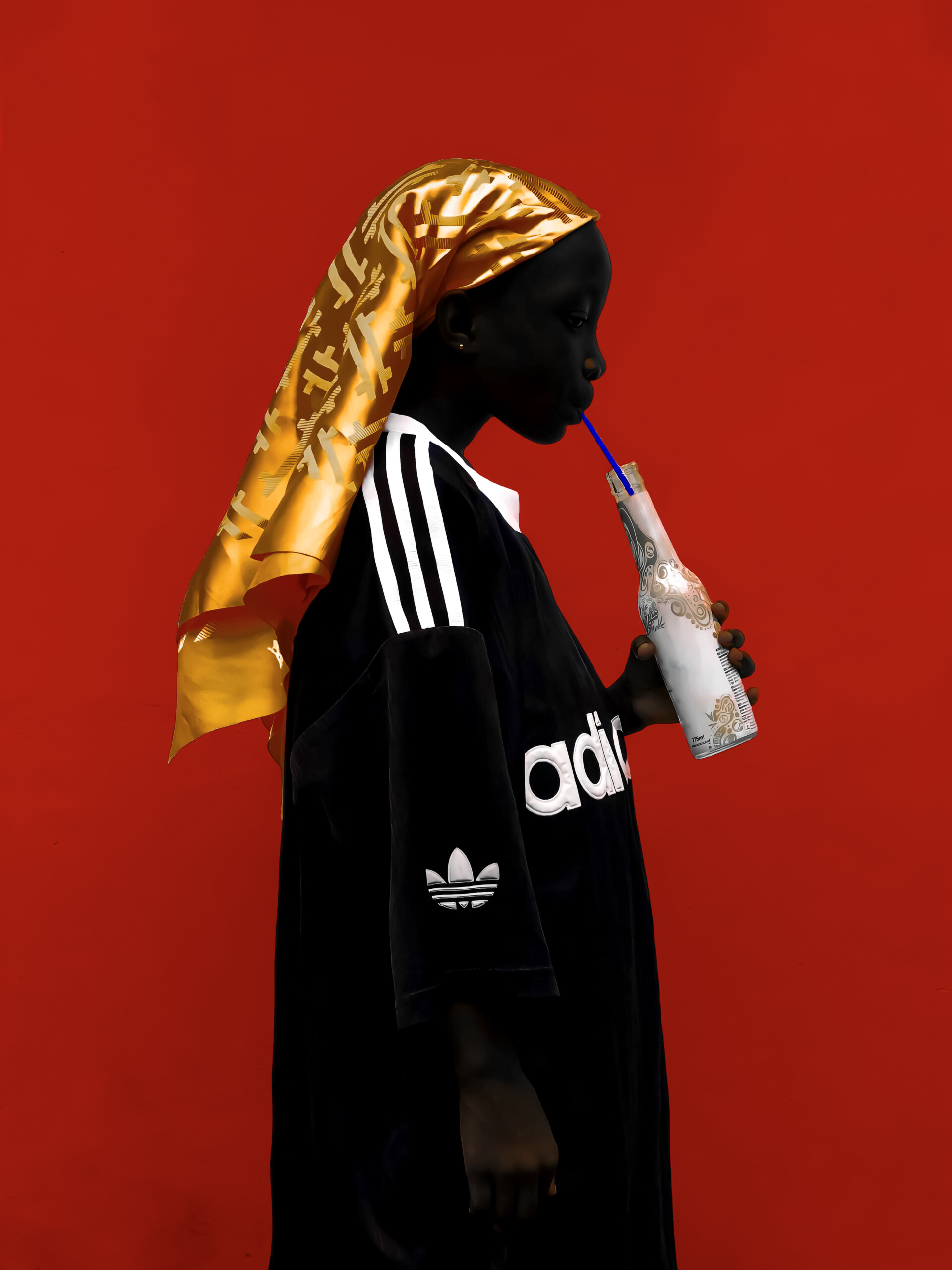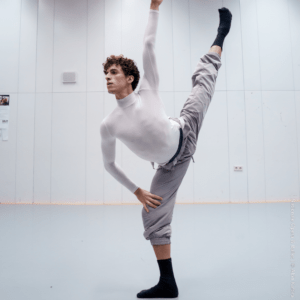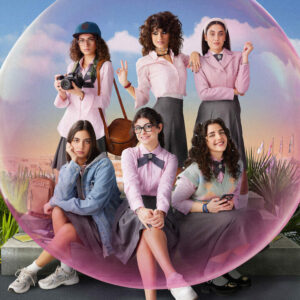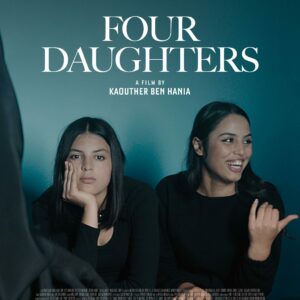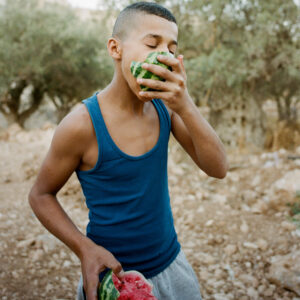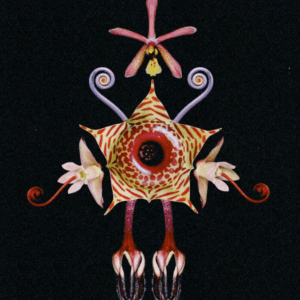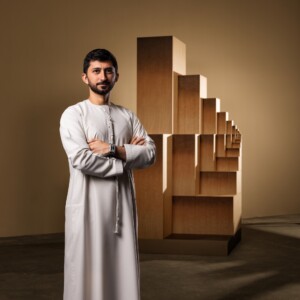Sarfo Emmanuel Annor (Instagram), a dynamic visual artist from Koforidua, Ghana, transforms the canvas of contemporary Africa with vibrant narratives. Armed with his smartphone, Sarfo Emmanuel Annor pioneers a fresh perspective on portraiture, relying solely on colours as a storytelling element. His work mesmerises viewers with the vibrancy of his culture, capturing moments that feel like paintings. Focused on both the setting and fashion within his images, Sarfo Emmanuel Annor’s lens conveys a beautiful African narrative and a therapeutic experience, exploring the emotional connection between colours and moods. Highlighting the demographic significance of the youth in Koforidua, he emphasises their influential role in shaping the continent’s future. Through his visionary colour use, inspired by the energy of his surroundings, he crafts a compelling portrayal of a vibrant youth culture, inviting viewers into a world where each stroke of colour tells a story and resonates with the heartbeat of contemporary Africa.
Sarfo Emmanuel Annor, please take us back to when you first developed an interest in photography as a child.
I would say my passion for photography began when I was given a phone by my sister when I graduated high school. I began to take pictures of family and friends and edit them on my phone for fun. I was really fascinated by how the photos came out. The composition and colours of the photographs really amazed me. I have always had a knack for telling stories and emotions visually, so when I got the phone and started taking those pictures, I decided to use my phone as an art creation tool to tell African stories through fashion and beauty.

Your work as a visual artist stands out for its vibrant use of colour. How did you start using colour as a narrative tool in your art?
Growing up, I loved to draw and always admired the colours around me — in nature and the colours of the prestigious Kente Cloth. I use vibrant colours as a form of art therapy, we are more emotionally connected to colours than we realise. They affect our mood through different associations — the human brain connects warm colours like red, orange, and yellow to a range of feelings such as passion, comfort, anger, and power. So, when people look at colours, I believe it can affect them in positive ways.
How has your experience in the fashion industry informed your approach to photography?
My mum sells second hand bags and clothes and I was an apprentice at a fashion shop for a few months before getting into photography, so fashion has influenced my work a lot. One of the elements I have incorporated into my works is thrifting and styling. Because my mum sells thrifted clothes I’m able to choose and select any outfits to style. Also, my experience from being an apprentice at a fashion shop gave me some awesome colour combinations and styling ideas.
Why did you choose an iPhone as your means of photography?
I chose an iPhone as my means of photography because it is very simple to use compared to digital cameras and affordable, too.

Would you ever steer away from using a smartphone, going to a digital camera?
Yes, as time goes on I might switch to a digital camera.
What drew you to focus on capturing the vivid images of local young people in Koforidua, Ghana, and what stories do you aim to tell through their portraits?
Koforidua and Ghana are blessed with so many beautiful people and a rich culture. So capturing such beautiful people and moments has always been my dream. These moments tell African stories through beauty and fashion, and incorporating these aspects is my way of celebrating and showcasing the rich culture and diversity of the continent. I also work to create awareness around socio-economic problems in my country, Ghana.
Your niece is a recurring muse. Can you share a specific photograph involving her that holds personal significance to you?
My niece is a beautiful soul and the first person I photographed when I got my first phone. She has a beautiful aura and adds so much emotion to the images. My first portrait was of her wearing a scarf on her head. It is the first image I posted on Instagram. The photo was about empowering African girls. I created that image to challenge societal norms of beauty. By putting African beauty and fashion at the forefront, my works can challenge Eurocentric standards of beauty and encourage diversity.

You approach your art from an optimistic perspective. How does this positivity influence your creative decisions, and what impact do you hope it has on those who experience your work?
The use of vibrant colours is one way I would say an optimistic perspective influences my creative decisions. The use of these colours is a form of art therapy for my audience. I believe people can be positively impacted by the use of vibrant colour, which can change their mood for the better.
How do you balance showcasing beauty and heritage to craft a narrative that resonates globally while staying rooted in the specificity of African culture?
Balancing global appeal with African cultural specificity involves highlighting universal themes like love, resilience, and human connection, while incorporating authentic elements of African heritage. It’s about creating a narrative that transcends cultural boundaries through relatable emotions, yet respecting and accurately representing the nuances of African culture to avoid stereotypes and promote a rich, diverse portrayal.
How does the influential role of young people in shaping the continent’s future inspire your artistic vision?
It inspires me to depict themes of resilience, innovation, and unity in my artistic vision. Through vibrant visuals, I aim to celebrate the dynamic spirit of African youth, contributing to a narrative that reflects their aspirations and potential impact on shaping a brighter future.

Can you share an example where a specific object added layers of meaning to a portrait, and what significance did it hold?
The photo is titled Gallon Thoughts and the object used in that photo is a gallon, placed on the head of the model. That photo was about the lack of water in some communities in the country. It symbolises how people in these communities have to walk miles just to find some water to use. I believe my work could throw some light on these issues and help them get fixed.
Are there specific artists or movements that have influenced your style? If, so what?
One artist who has inspired me a lot through my art journey is Prince Gyasi, a Ghanaian visual artist.
How do you stay innovative in your photography and when documenting and preserving cultural heritage?
I stay innovative by embracing emerging technologies, experimenting with unconventional perspectives, and collaborating with communities to ensure authentic representation. Exploring diverse storytelling techniques, incorporating multimedia elements, and staying attuned to cultural nuances enables me to push the boundaries of traditional photography, contributing to a dynamic and evolving documentation of cultural heritage.
What messages or themes do you aim to convey through your art, and how do you want viewers to perceive Africa through your lens?
The central theme of my work is celebrating African beauty. One aspect of African beauty is the appreciation for dark skin tones. Many African cultures have historically held dark skin as a symbol of beauty and associated it with health, strength, and heritage. My celebration of dark skin can be seen in the use of dark-skinned models in my work and also in highlighting the skin of the models in the photos. Traditional attire and fashion also play a significant role in defining African beauty. Different regions and ethnic groups have their own distinct clothing styles, fabrics, and patterns that reflect their cultural heritage and craftsmanship. I love to incorporate traditional clothing like Kente Cloth and others in my work.

Is there a colour you’re consistently drawn to when directing your photography?
I’m consistently drawn to blue tones and warm hues in my photography. These colours evoke a sense of grounding and connection to nature, fostering emotions of warmth, comfort, and timelessness in my creative process. They also complement cultural contexts, adding depth to the narrative while creating visually appealing compositions.
If you were to shift away from colour and shoot in black and white, what would your creative vision or concept for such photographs be?
In a black and white context, I would focus on capturing the raw and elemental aspects of cultural heritage. Stripping away colour emphasises form, texture, and contrast, allowing a more intimate exploration of the cultural nuances and traditions. The absence of colour could evoke a timeless quality, emphasising the universal elements that transcend specific cultures while still preserving the authenticity of the subject matter.
If your photos could transport people to any African destination, where would you want them to go and why?
I would want my photos to transport people to the vibrant streets of Accra, Ghana. The rich tapestry of colours, bustling markets, and the fusion of tradition with modernity creates a visually captivating experience. It’s a place where cultural heritage thrives in every corner, offering a sensory journey that combines history, architecture, and the lively spirit of the people.

If you could give one piece of advice to a younger version of Sarfo Emmanuel Annor, what would it be?
To embrace the journey of learning and growth; don’t fear mistakes, as they often lead to the most valuable lessons and creative breakthroughs.
For more stories of art and culture, like this interview with Sarfo Emmanuel Annor, visit our dedicated archives.
